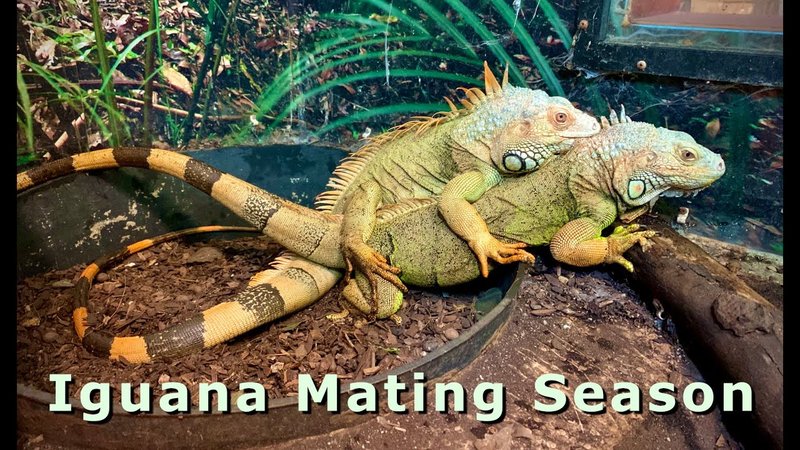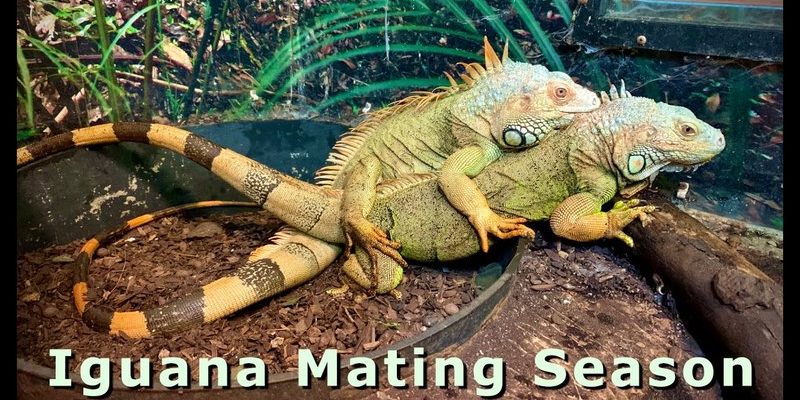
Green iguanas, known for their striking green color and robust size, have a unique way of finding love. They spend the breeding season engaging in elaborate displays to attract mates, with behaviors that may seem a bit theatrical but are all part of their natural charm. Understanding how green iguanas reproduce is not only interesting; it’s also crucial for anyone thinking about keeping these creatures as pets or supporting conservation efforts for their wild populations. So, let’s dive into the colorful world of iguana romance and parenting!
Understanding the Breeding Season
Breeding for green iguanas typically happens during the spring and summer months when warmer weather arrives. This is no coincidence; like many reptiles, their reproductive cycles are influenced by environmental factors. Increased temperatures and longer daylight hours signal to the iguanas that it’s time to find a mate.
During this time, male iguanas become particularly aggressive, vying for the attention of females. You might see them bobbing their heads, displaying their dewlap (that flap of skin under their throat), and even showcasing their impressive size and strength. These behaviors are not just for show; they’re essential for attracting a female partner. The more impressive a male looks, the better his chances of mating.
Interestingly, female iguanas can be quite selective when it comes to choosing a mate. They’ll often assess the males based on their displays, size, and overall health. This process can take time, as they want to ensure they select a robust partner to help produce healthy offspring.
Mating Rituals and Behavior
Once a pair of iguanas agrees to mate, they engage in a series of courtship behaviors. The males often chase the females and perform a variety of impressive displays. This can involve head bobbing and movements that showcase their agility and strength. If the female is receptive, she responds positively, signaling that she’s ready to mate.
Mating itself is a surprisingly quick process. The male will climb onto the female’s back and grasp her neck with his mouth to hold her in place. This behavior might look a bit rough, but it’s a common mating practice among reptiles. After mating, the female usually lays her eggs within a few weeks.
It’s important to note that green iguanas can breed multiple times throughout the season, resulting in several clutches of eggs. Each clutch can contain anywhere from 20 to 70 eggs, depending on the female’s health and environmental conditions.
The Nesting Process
After mating, the female iguana begins searching for a suitable nesting site. She’ll look for a warm, moist area, often digging in sandy soil or soft earth. You might be surprised to learn that these nests play a crucial role in the survival of the eggs. Choosing the right nest site can mean the difference between life and death for the hatchlings.
Once she finds the perfect spot, the female will dig a hole and lay her eggs, covering them up afterward. This covering not only helps regulate temperature but also protects the eggs from predators. It’s a fascinating and protective instinct that showcases the maternal side of these creatures.
After laying the eggs, the female iguana usually leaves them to hatch on their own. This independence might seem harsh, but it’s quite common in the reptile world. The eggs incubate for about 90 to 120 days before they hatch, depending on the temperature and humidity levels.
Incubation and Hatching
Incubation is a critical phase in the lifecycle of green iguanas. During this time, the eggs need the right conditions to develop. If you’re thinking about breeding green iguanas, it’s essential to monitor factors like temperature and humidity.
Hatchlings will emerge from the eggs in a synchronized fashion, which is fascinating to witness! They often take a little time to break out of their shells, using a special tooth called an “egg tooth” to help them out. Once they’re free, the little iguanas have to be cautious. They’re vulnerable to predators, so their instincts kick in right away.
It’s vital for hatchlings to find cover quickly to avoid being eaten by birds, other reptiles, or even larger iguanas. Interestingly, once they’re free, they tend to head for the trees right away, establishing their territory and finding food sources.
Parental Behavior and Offspring Survival
After laying her eggs, the female iguana doesn’t participate in parenting. This lack of parental care might surprise you, but it’s a common trait among many reptiles. Once the eggs are laid, the responsibility for survival shifts entirely to the young iguanas.
Hatchlings must rely on their natural instincts to stay safe. They’re born knowing how to climb and find food, a remarkable survival strategy. In their first few days, they’ll often consume soft leaves and fruits, which help them gain strength.
Survival rates for iguana hatchlings can be quite low due to predation. Many won’t make it to adulthood. However, those that do will often grow quickly, as green iguanas can also reach impressive sizes during their first year of life.
Challenges in Breeding Green Iguanas
Breeding green iguanas comes with its own set of challenges. For those keeping them as pets, understanding their breeding behavior is crucial. If you’re not prepared for the responsibility of caring for hatchlings, it can quickly become overwhelming.
Health issues can also arise, especially if the iguanas are not kept in optimal conditions. Factors like diet, space, and temperature can significantly affect their reproductive success. Poor nutrition can lead to a lack of fertility in females, while stress from improper housing can lead to aggressive behavior among males.
Additionally, ensuring that you maintain genetic diversity is vital when breeding iguanas. Inbreeding can lead to health problems in the offspring. Therefore, if you’re considering breeding, it’s best to consult with a reptile expert or veterinarian.
In the end, breeding and reproductive behavior in green iguanas is a captivating area that offers insight into the lives of these incredible creatures. From their elaborate courtship rituals to the challenges of raising young, every aspect reflects their adaptability and strength.
If you’re thinking about breeding green iguanas or even just interested in their behavior, appreciating the intricacies of their reproductive process can enhance your understanding and respect for these reptiles. Whether in the wild or in your home, knowing how they reproduce helps us better support their needs and conservation efforts. By understanding their behavior, we can ensure a brighter future for these stunning reptiles.

